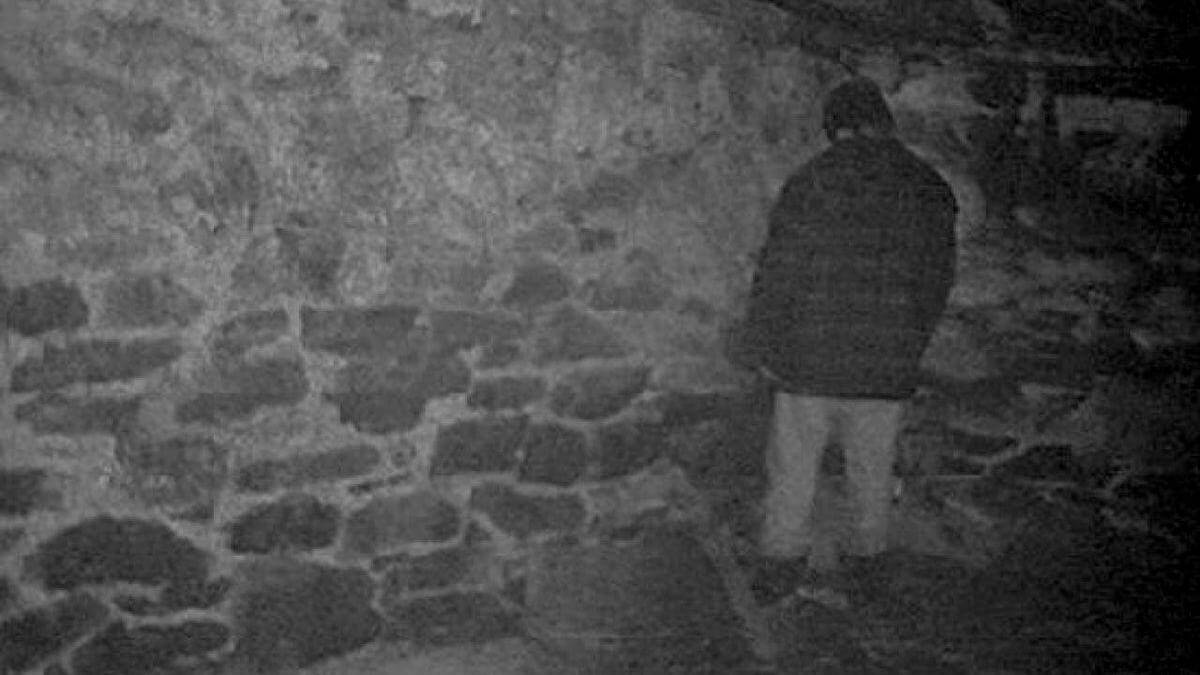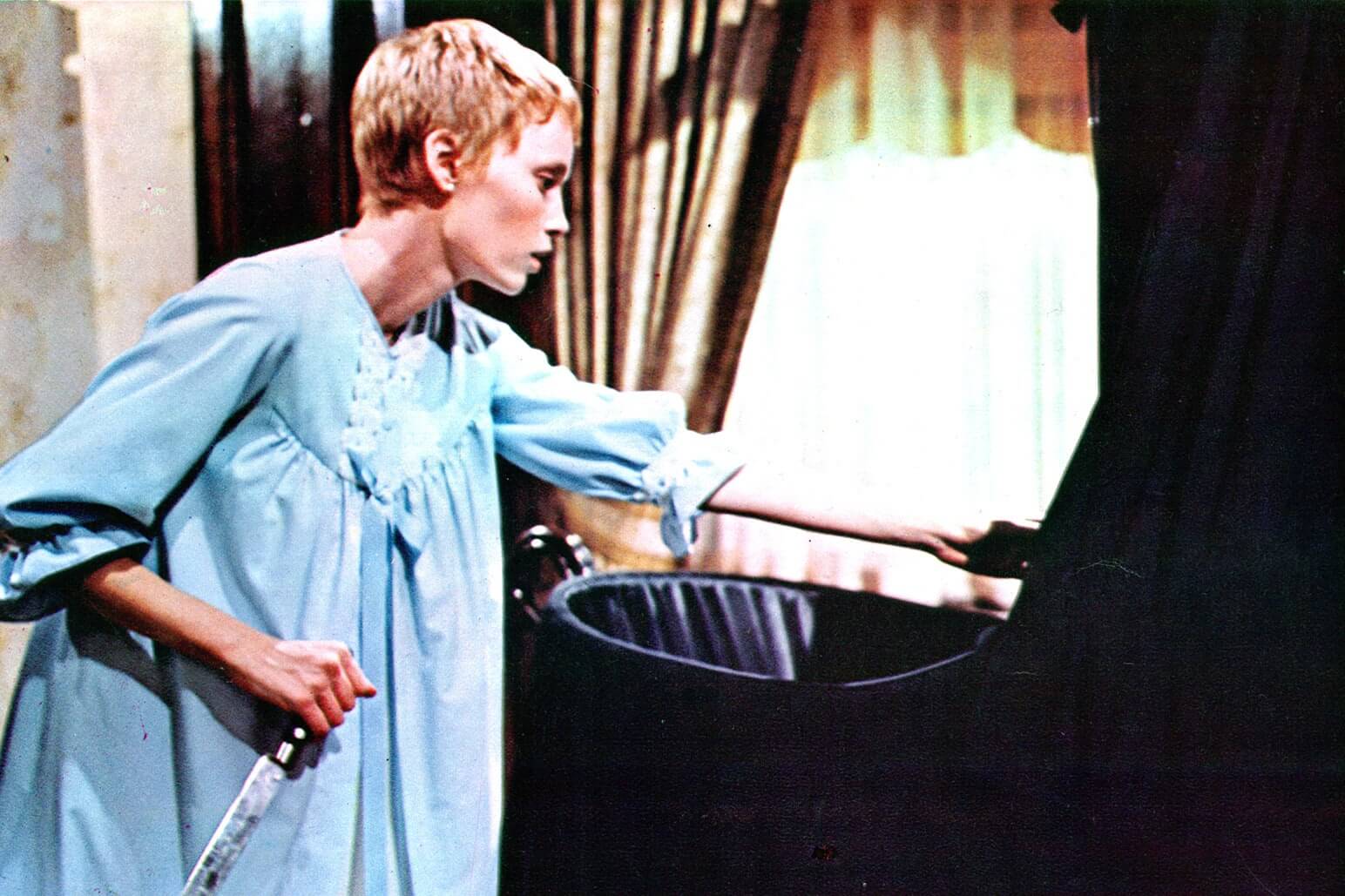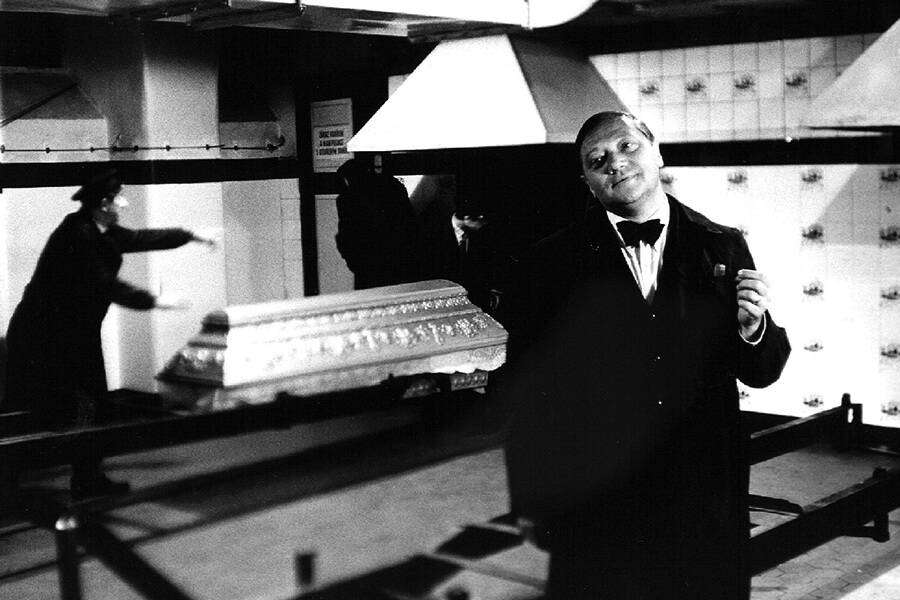HORRORS for people who DON’T LIKE gore and BLOODSHED

We have sci-fi horror, gothic horror, monster movies, slasher movies, modern post-horror movies and a whole host of other branches of this kind of cinema, each with slightly different characteristics. However, in many, a similar theme runs through, namely – showing excessive violence, a veritable explosion of brutality or even gore. In this list, I will suggest titles in which bloody scenes play no or marginal role, and all fragments that may cause aesthetic disgust (other than those caused by aversion to characters) are limited to strictly defined and extremely important narrative sequences. In other words – horror movies for people who don’t like gore or are just planning to enter the genre and wouldn’t want to start from the proverbial high C. At the same time, I warn you: just because they’re not bloody doesn’t mean they can’t be scary. Sometimes it works exactly the opposite…
Berberian Sound Studio

Giallo is a branch of Italian horror popular in the last century, characterized by a combination of crime and horror elements, including – and perhaps above all – intense violence. Gilderoy (Toby Jones), an expert in sound engineering, is hired to produce this type of film, who uses fruits, vegetables and everyday objects to create sounds that are absolutely not associated with everyday life. The contrast between the shy, sensitive British and the uncouth and quick-tempered Italians is emphasized here at every step, thanks to which we encounter a kind of psychological drama. The more so that working on such a horror film affects the psyche of the main character, who becomes more and more paranoid during the screening. I recommend it especially to those interested in the technical side of film production: they will get a behind-the-scenes insight into the recording of key sound sequences.
Blair Witch Project
 Although some have already forgotten about it, the Blair Witch Project was once famous for one of the most creative marketing campaigns of all time. Here’s how the film’s publicists managed to convince people that the cast members really disappeared in mysterious circumstances, and that the recording available at the cinema is not a plot, but a documentary. For this reason, the scenes depicted in it, although devoid of literalness – we are literally guided in the dark, and in many cases we rely on the accounts of the characters plunging into madness – aroused even greater fear of the audience and motivated the society to “find” the actors. Of course, finally an official statement appeared and the mystery surrounding the production was solved, but also from today’s perspective, it is an excellent, made at cost and with the full use of available techniques, a horror that scares with what we will never see.
Although some have already forgotten about it, the Blair Witch Project was once famous for one of the most creative marketing campaigns of all time. Here’s how the film’s publicists managed to convince people that the cast members really disappeared in mysterious circumstances, and that the recording available at the cinema is not a plot, but a documentary. For this reason, the scenes depicted in it, although devoid of literalness – we are literally guided in the dark, and in many cases we rely on the accounts of the characters plunging into madness – aroused even greater fear of the audience and motivated the society to “find” the actors. Of course, finally an official statement appeared and the mystery surrounding the production was solved, but also from today’s perspective, it is an excellent, made at cost and with the full use of available techniques, a horror that scares with what we will never see.
Rosemary's Baby

Regarded as one of the best horror films in history, Roman Polanski’s film is a sensational vivisection of loneliness and the resulting projections of the mind left to the imagination. Mia Farrow, who plays the titular Rosemary, perfectly captures both the delicate side of the heroine’s character and the more confrontational one, which over time begins to meet the situations she encounters more and more. At the same time, it is a metaphor for the fear of pregnancy and the complications associated with it – remember that Rosemary is convinced that she will give birth to Satan’s child – intensified by being abandoned to fate by an eternally absent partner.
Quiet Place

Post-apocalyptic themes are nothing new in the film. Since the beginning of cinema, hundreds of monsters, viruses and other disasters have scrolled through the screens, which effectively decimated humanity. In a Quiet Place, however, John Krasinski based the entire plot on a simple premise: terrifying creatures have incredibly sensitive hearing, so characters can only make sounds in very specific situations. The result is a family horror film in which we observe a group of heroes, parents with children, trying to lead a relatively normal life during the destruction of the Earth. What makes the screening unique is the incredible silence – although not occurring all the time, because there will be both louder moments and the musical track – it is a poignant whole so often that it causes almost physical discomfort. Crunching popcorn on a movie has never been so awkward.
Medium

Polish horror? And a good one? Kidding? Absolutely not! Medium is a film by Jacek Koprowicz, made in 1985, somewhat forgotten today, and for this reason I feel the need to remind you of it. It tells the story of Commissioner Selina (Władysław Kowalski), who, together with the partner assigned to the case, tries to unravel the mystery of some paranormal phenomena that happen to a group of unrelated people. The whole thing combines elements of a detective story with occult horror, and places the action at a point in history just after Hitler seized power, thanks to which we can read it in an ideological context. The meticulously planned intrigue – although surprisingly simple after closing the threads – keeps our nerves in check until the very end of the screening, while allowing us to solve the mystery ourselves. The amazing atmosphere, intelligent script and great acting make up one of the best Polish genre films. If you haven’t seen it, it’s a must-see.
Relic

Let’s stop here for a moment to define the “abomination” of the film. We will find elements of body horror here – never becoming exploitation, always used as a metaphor – and I advise people sensitive to physical deformities to see the trailer to assess whether the screening will not be too “strong”. I think that the fragments present in it quite accurately reflect what we will see on the screen while watching. Moving on, however, to the description of the plot – Relic focuses on three heroines who have to face the fact that the oldest of them, played by Robyn Nevin Edna, is getting more and more sick. It is a post-horror film focusing on the psychological aspect of their relationship and the dilemma of whether it is better to give the old woman to a nursing home or to watch over her until the end of her days. So if you had a similar situation in your family history or struggled with this type of problem yourself, I recommend it even more, because it can have therapeutic overtones.
Invisible Man (1933)

I purposely mark the date because we’ve seen a few remakes of this film, which, however, usually put more emphasis on showing violence. Meanwhile, in the original – although it contains scenes of murder – firstly, due to the black and white image, we perceive them differently, and secondly, they are not presented literally, thanks to which people sensitive to blood have nothing to be afraid of. To this day, The Invisible Man can bring great satisfaction from the screening, primarily because it is simply an excellent black comedy. Although the hero’s invisibility doesn’t impress anyone anymore, we can be surprised at how demonic and repulsive the character is. Especially when compared to other classic Universal monsters like Werewolf and Creature from the Black Lagoon, whose stories tended to be tragic and ambiguous. Meanwhile, Dr. Jack Griffin is a piece of bastard and although he will make us laugh many times with his insolence, we will always have the belief in the back of our minds that he is a perfidious terrorist.
The Cremator

This cult representative of the Czechoslovak New Wave is still a sensational film work, whose anachronism is only an additional advantage. The techniques used here intensify the subjective point of view of the protagonist, who is becoming more and more detached from reality by the minute. We follow the story of Karl Kopfrkingl (the brilliant Rudolf Hrušínský), a crematorium worker convinced that by burning corpses he transfers souls to the other side. The historical thread is important here, because the protagonist is also fascinated by Nazi ideas. Surprising frames, image distortions, Karl’s constant monologues, sounding like a real-time diary of a psychopath – all this adds up to an extremely suggestive and terrifying study of a madman who, under the influence of favorable circumstances, can carry out his murderous tendencies. The contrast between the high arts and pedantry he idolizes and other, less glorious parts of life only reinforces the impression of communing with someone imbued with evil to the core.
Do you know the above movies? Do you have other titles to suggest? Let me know in the comments!

